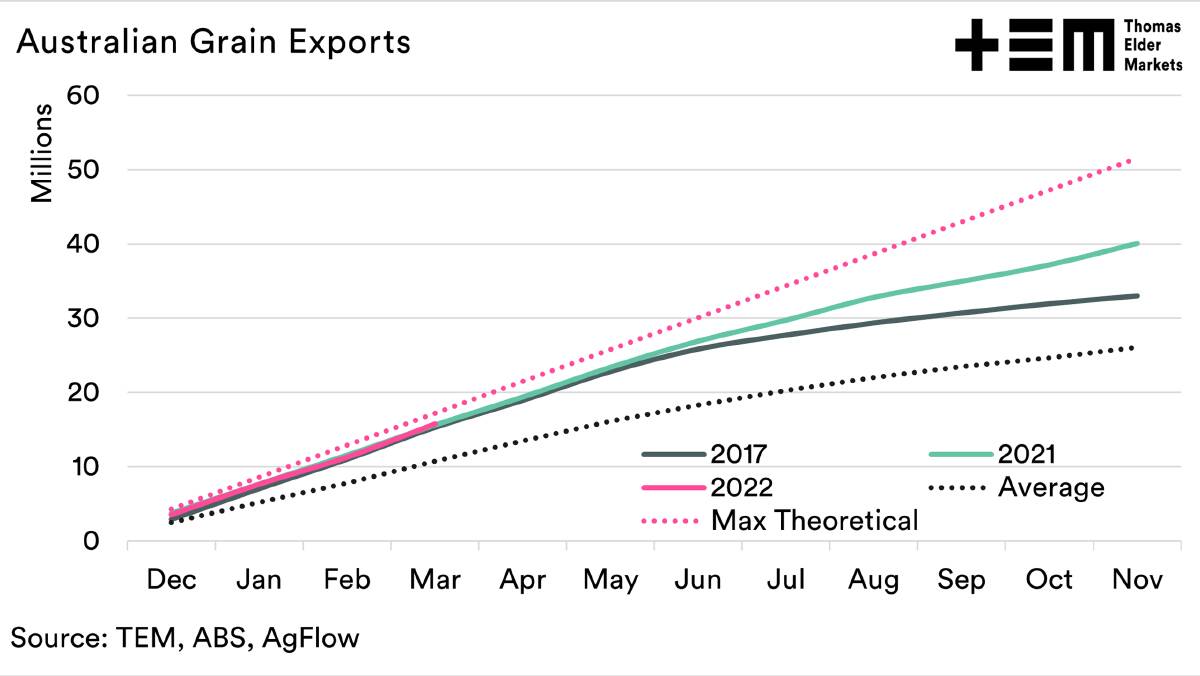
AUSTRALIAN grain prices remain at massive discounts to futures levels.
Subscribe now for unlimited access to all our agricultural news
across the nation
or signup to continue reading
In recent weeks the premium/discount between most of Australia has technically improved.
For example, the basis in Kwinana averaged -$217 for the week commencing March 7.
Last week it averaged -$164.
So while it has improved, it has gone from a really huge discount to what could be considered a really huge discount.
To put this in perspective, Kwinana has typically traded at a strong premium over Chicago wheat futures like most port zones in Australia.
So while it has improved for growers, it is hardly a great spread.
One of the reasons for the lack of response in the local marketplace has been the lack of availability for adding additional volume to the shipping stem.
To an extent, this is true in that logistics were already at close to capacity before this current rally.
However, where there are huge margins to be made if grain can be exported.
At these margins, there is the incentive to find a way.
I thought it was worth having a look at exports and what is the theoretical maximum export potential.
Australia is notoriously difficult to get easy and quick access to export data compared to other developed nations.
In other parts of the world, the data is released regularly and timely (and free of charge).
In Australia, the Australian Bureau of Statistics (ABS) releases the data a couple of months after the event, and there is a charge to get access.
To get the most up to date data on exports, we use data from our partners at AgFlow, who have access to export volumes through their network of contacts.
This allows us to update until the middle of March, instead of the ABS data which has January as the most up to date data point.
The chart shows our exports of grain (barley, canola, sorghum and wheat).
So far, we are meeting the same export pace as last year, a huge export year.
This is well above the average we have exported over the past decade.
Can we do more?
In theory, we could do more.
The theoretical line is if we loaded and exported our record volume, then repeated it every month.
So, in theory, we could increase our export program to more than 50 million metric tonne.
It is important to note the term 'in theory'.
It is theoretically possible that I could get a position as a ruckman in the AFL, but that doesn't mean it will happen.
It won't be possible to run the Australian supply chain at 100 per cent for 12 months, especially with current issues around the availability of truck drivers etc.
We can, however, run the system as hard as possible to ensure there is a realistic maximisation of the supply chain.
If there is a year to get grain exported in as large of a volume as possible, it is 2022.
Let's hope that export volumes are increased in order to help increase the flow of overseas values into local growers' pockets.
Want weekly news highlights delivered to your inbox? Sign up to the Farm Weekly newsletter.

